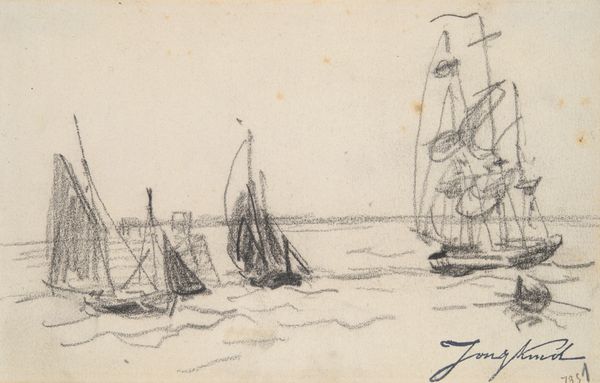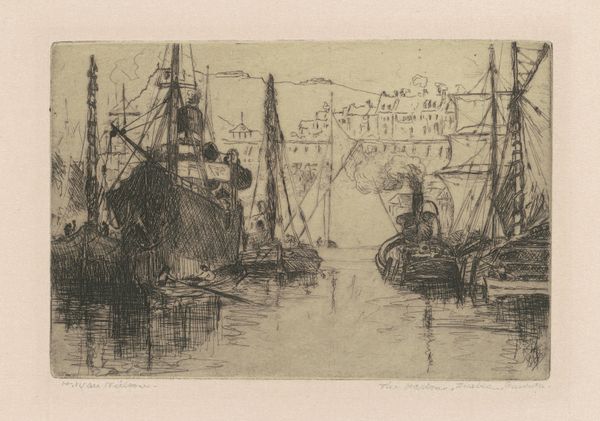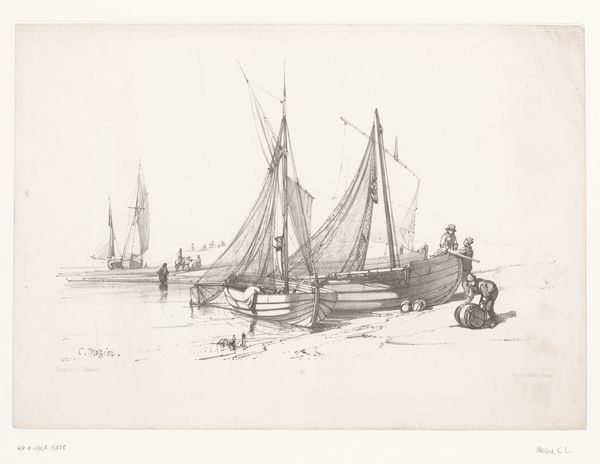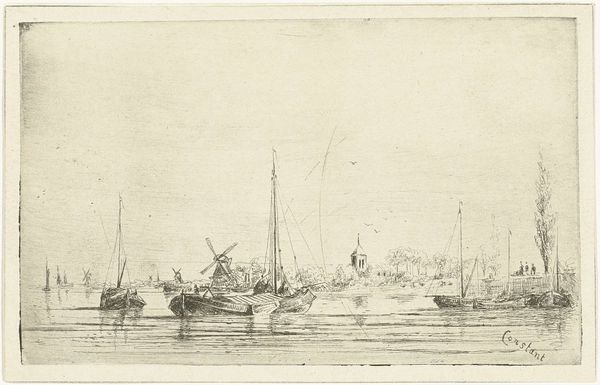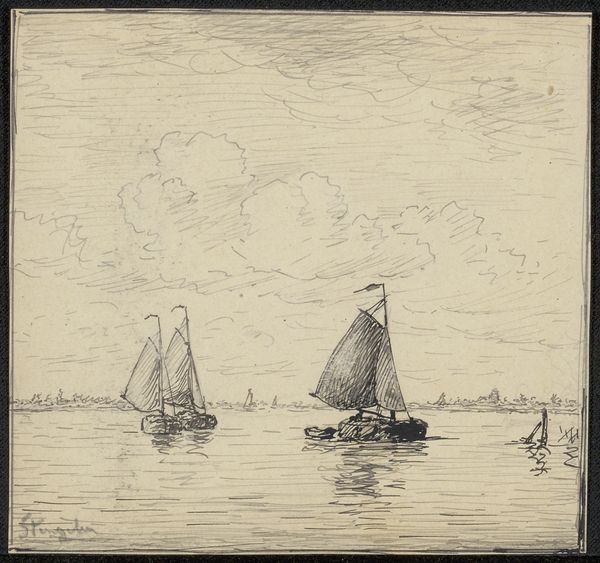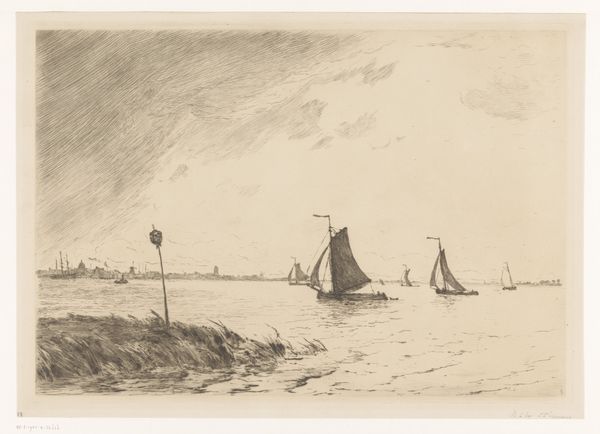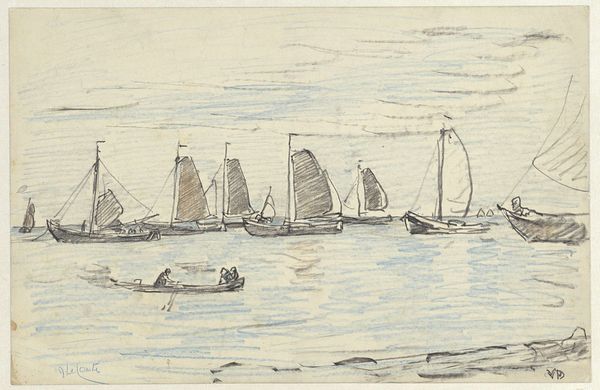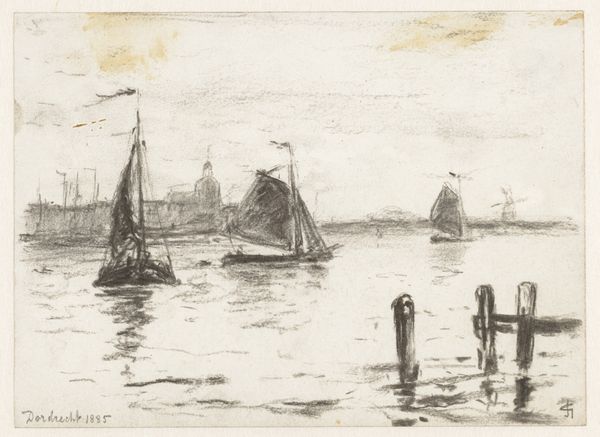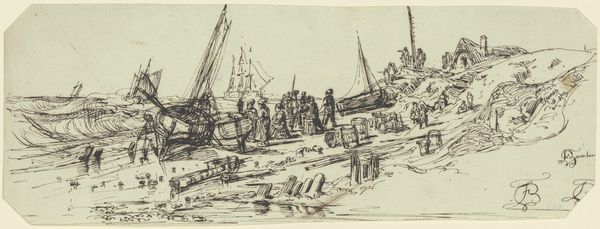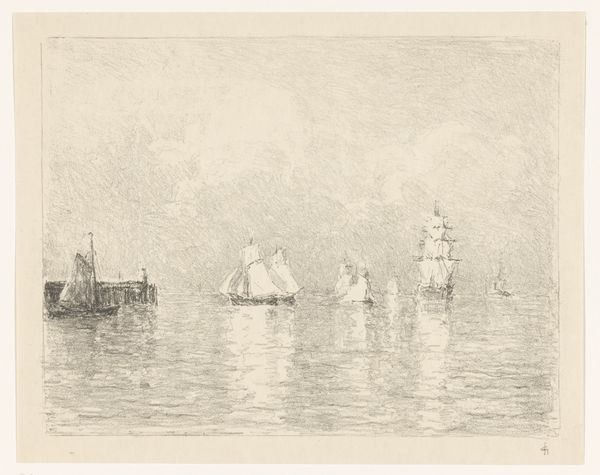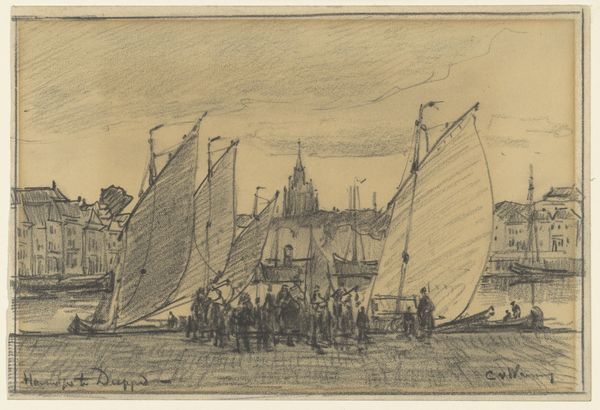
drawing, pencil
#
drawing
#
landscape
#
form
#
pencil
#
line
#
cityscape
#
realism
Dimensions: height 153 mm, width 225 mm
Copyright: Rijks Museum: Open Domain
Editor: This drawing, "Schepen in een haven," created between 1871 and 1929 by Kees van Waning, captures a harbor scene with sailboats. It feels like a quiet, almost melancholic moment. What do you see in this piece? Curator: I see a visual document rooted in the societal shifts of its time. Harbor scenes like these were incredibly common; consider them from the viewpoint of labor and trade. Who owns these ships, and who works on them? Is this a space of leisure, or intense economic activity for survival? Think of the rise of industrial capitalism. Editor: That's an interesting perspective. I hadn’t considered the socioeconomic context. Curator: The drawing’s medium – pencil – and realist style offer clues. Pencil sketches were accessible; think of them as preliminary studies but also affordable art forms. Realism as a movement aimed to depict the unvarnished truth, the everyday life. Who was this ‘truth’ for? Whose narrative is foregrounded, and whose is obscured? Editor: So, the choice of subject matter and style isn’t just aesthetic; it also reflects a social positioning. Curator: Precisely. It prompts us to think critically about who has the power to represent reality, and what social functions that representation serves. Does the work reveal anything about social class? The availability of resources to some, and not to others? Is there gendered labor present in the work? Editor: I’m starting to see this harbor scene not just as a pretty picture but as a statement, however subtle, about labor, class, and maybe even access in its time. Curator: Exactly! Art always exists within – and comments upon – its historical and social landscape. Editor: Thank you. I’ll definitely approach art with those questions in mind from now on.
Comments
No comments
Be the first to comment and join the conversation on the ultimate creative platform.
